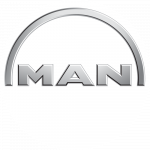Chemnitz and Munich, Germany – 16 January 2014:
We, the company pro et con Innovative Informatikanwendungen GmbH, leader of technology in the field of software migration, and the MAN Truck & Bus SE today announced the successful completion of a common software migration project.
Content of the project realised in the term July to December 2013 was the automatic migration of simple, text-oriented screen masks into modern, user-friendly, graphic-oriented user inter-faces. Thereby our echnologies and tools were used.
The highly complex program systems “WMX2000”, used in the Munich plant, plan, control and monitor the production processes in truck and bus production. Ca. 800 ASCII-based screen masks offer the possibility to get information about the production process and to control this. This screen masks worked over decades robust, but regarding design and user guidance before the modernisation they didn’t meet current requirements any longer.
The migration tool MaTriX (Mask Transformation Toolbox) developed by us realises the modernisation of the no longer up-to-date, ASCII-oriented screen masks essentially automatic. This significantly reduces the project costs and the project term in comparison with a manual conversion.
”The new interfaces available after the migration not only comply with the modern MAN-CI, but furthermore offer all elements of a modern user interaction”, comments Curd Maier, Head of CC Production Planning & ontrol and project manager at MAN. “So on the one hand modern functionalities for displaying and processing the production-relevant information are available, on the other hand an optimisation and flexibilisation of the system architecture is reached.”
